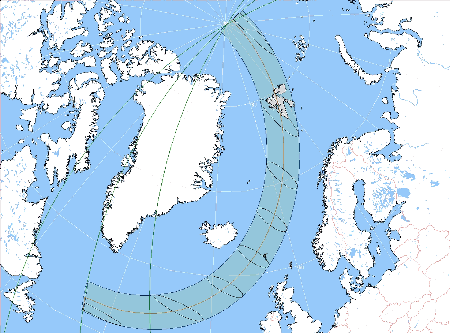 Deutsch Deutsch |
Solar Eclipse 2015 | ||||||||||
The solar eclipse on March 20, 2015
1. Preliminary remarks On March 20, 2015 the astronomy fever attacked me again: A total solar eclipse over the Northern Atlantic, which could be still observed at my home (degree of latitude = 50° N) as a penumbral (i.e. partly covered) solar eclipse. Still I remember painfully the century event of the total solar eclipse over Germany on August 11, in 1999. About 200 km south of my home the totality strip started - the umbra, created by Moon, when it is between the Sun and Earth. My plan was to go near Karlsruhe, where it should be really dark. But there was rainy weather! Because of the fully clouded sky I unfortunately did not execute this plan.. Something similar happened to me in 2012, when the second Venus Transit took place, which I can observe in my life at least. After enormous preparations the day before (transportation of my telescope to a suitable place, determining its optimal settings, taking test shots, etc ...) the sun again hid behind thick clouds - frustration! But on March 20, 2015 I was lucky. A cloudless blue sky greeted me. Why could not be solar observation possible without a lot of preparation? A normal tripod, the camera with a universal lens (Nikkor AF-S, 18-200 mm), some self-made solar filter, built by a construction manual from Astrosolar, should be sufficient. My refractor stayed at home. Of course, I had fully informed myself before: The complete sun occultation was in a strip (see fig. 30), which started on the North Atlantic south of Greenland, moved over the Faroe Islands and Spitsbergen and ended up near the North Pole. You will find an easy to use graphics here and further information at © Stefan Krause . The last two links are written in German only. 
Fig. 30: Central Zone of the solar eclipse on March 20, 2015 (Saros cycle 120) Created with Win-Eclipse 3.7 by Heinz Scsibrany and courtesy of Sonnenfinsternis.org I was quite fast to find the observal time of the event at my home in Internet, see: http://www.sofi2015.de/mitteleuropa.htm (These links are written in German, too).
Table 1: Times of contact, Solar altitude and max. Occultation of the penumbral solar eclipse at March 20, 2015 at Frankfurt, times in CET.
Read on: 2. My observations Go back to top |
|||||||||||
| Copyright by Hans Joachim Ilgen since 1950 | |||||||||||